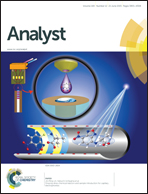 Scientists may have discovered a more effective way to detect cocaine use among people. Currently, the most common methods of drug testing are urine analysis (UA) and blood tests. These measure substances by parts per million and are very sensitive, yet UAs can sometimes be unreliable and blood tests are inconvenient and invasive as well.
Scientists may have discovered a more effective way to detect cocaine use among people. Currently, the most common methods of drug testing are urine analysis (UA) and blood tests. These measure substances by parts per million and are very sensitive, yet UAs can sometimes be unreliable and blood tests are inconvenient and invasive as well.
There are other ways of conducting drug tests, such as breathalyzers for alcohol and even marijuana use, as well as saliva and hair testing. The discovery that drug use, specifically cocaine, can be determined by analyzing the fingerprint may allow for quicker results and a less invasive approach to testing.
“The beauty of this method is that, not only is it non-invasive and more hygienic than testing blood or saliva, it can’t be faked. By the very nature of the test, the identity of the subject is captured within the fingerprint ridge detail itself,” explained Dr. Melanie Bailey, a chemistry professor who worked on the project.
The cocaine fingerprint test works by spraying the individual’s fingerprint with a chemical that reacts with benzoylecgonine and methylecgonine, both are secreted after a person has ingested cocaine. Scientists were able to determine if a person had cocaine in their system because the spray would indicate the presence of the metabolized residue that is secreted. The results of their work were published in the journal Analyst.
There is a definite need for tests that can measure illicit drug use that are portable, accurate and easy to use. The applications include law enforcement use during traffic stops to schools, work, at home and at drug and alcohol rehabilitation programs as well.


